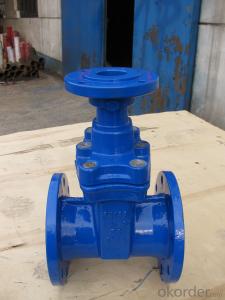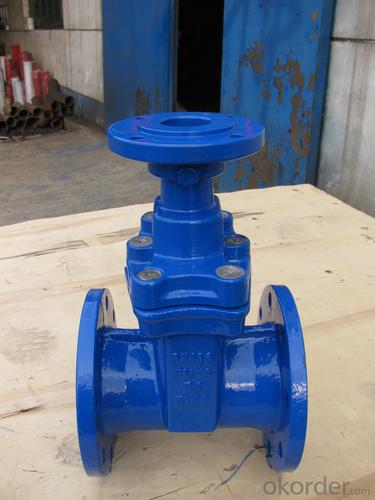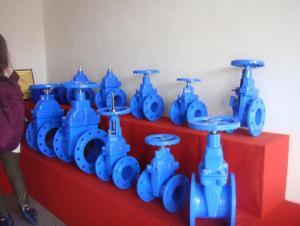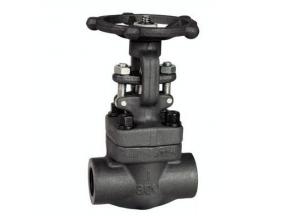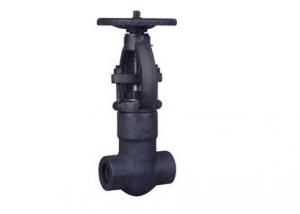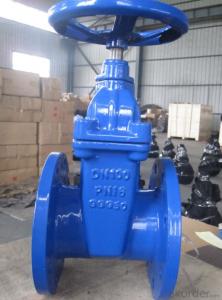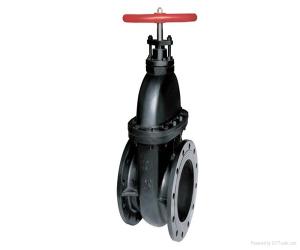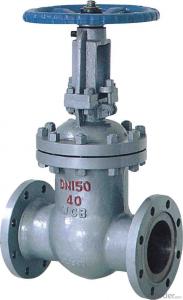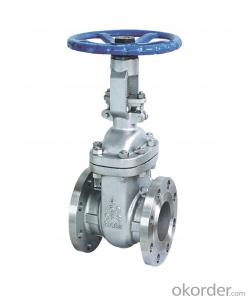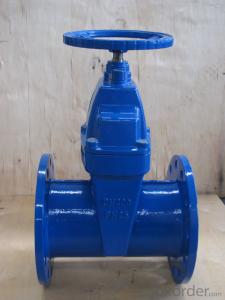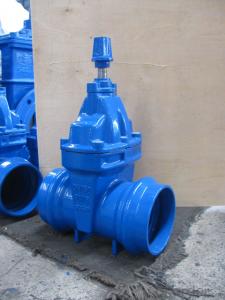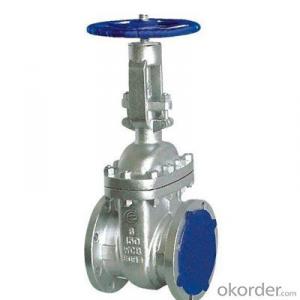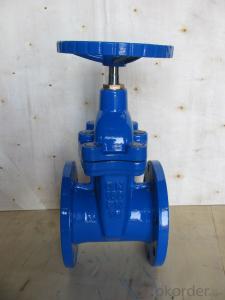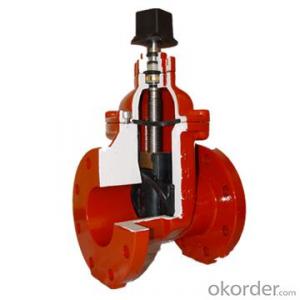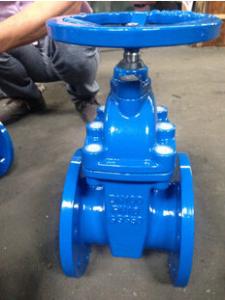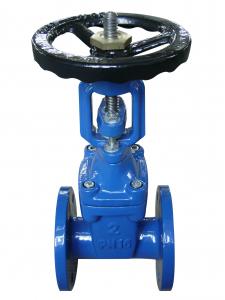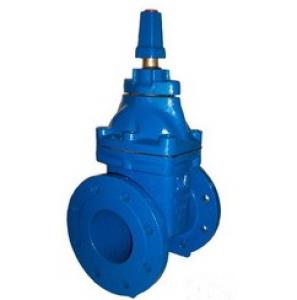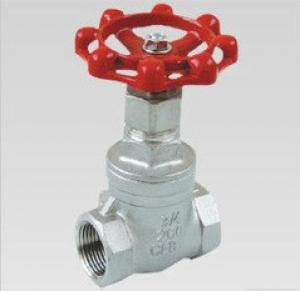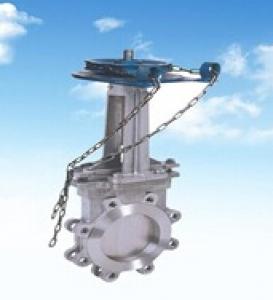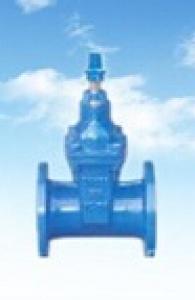ductile Iron Gate Valve standard cnbm supply ANSI standard
- Loading Port:
- China main port
- Payment Terms:
- TT OR LC
- Min Order Qty:
- 100 PCS
- Supply Capability:
- 1000 PCS/month
OKorder Service Pledge
OKorder Financial Service
You Might Also Like
1.Structure of Gate Valve Description:
A gate valve, also known as a sluice valve, is a valve that opens by lifting a round or rectangular gate/wedge out of the path of the fluid. The distinct feature of a gate valve is the sealing surfaces between the gate and seats are planar, so gate valves are often used when a straight-line flow of fluid and minimum restriction is desired. The gate faces can form a wedge shape or they can be parallel. Gate valves are primarily used to permit or prevent the flow of liquids, but typical gate valves shouldn't be used for regulating flow, unless they are specifically designed for that purpose. Because of their ability to cut through liquids, gate valves are often used in the petroleum industry. For extremely thick fluids, a specialty valve often known as a knife valve is used to cut through the liquid. On opening the gate valve, the flow path is enlarged in a highly nonlinear manner with respect to percent of opening. This means that flow rate does not change evenly with stem travel. Also, a partially open gate disk tends to vibrate from the fluid flow. Most of the flow change occurs near shutoff with a relatively high fluid velocity causing disk and seat wear and eventual leakage if used to regulate flow. Typical gate valves are designed to be fully opened or closed.When fully open, the typical gate valve has no obstruction in the flow path, resulting in very low friction loss.
2. Main Features of the Gate Valve:
• Valve body cavity using non-toxic epoxy resin,both inside and outside flashboard completely is coated with rubber
• Free of water pollution
• High manufacturing accuracy
• High strength
• Environmental protection and energy saving
• Good visual effect
3. Images
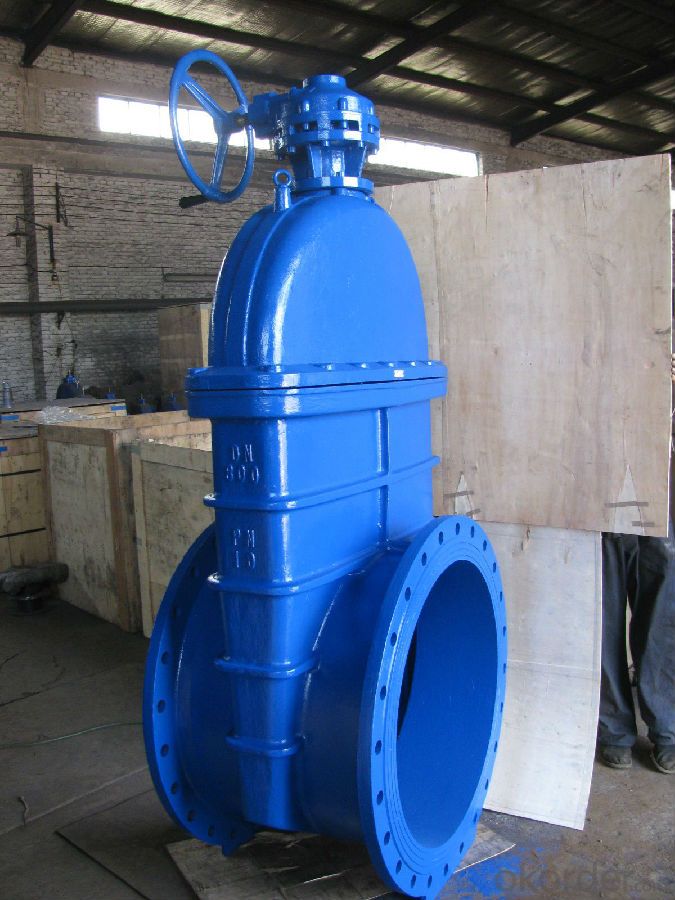
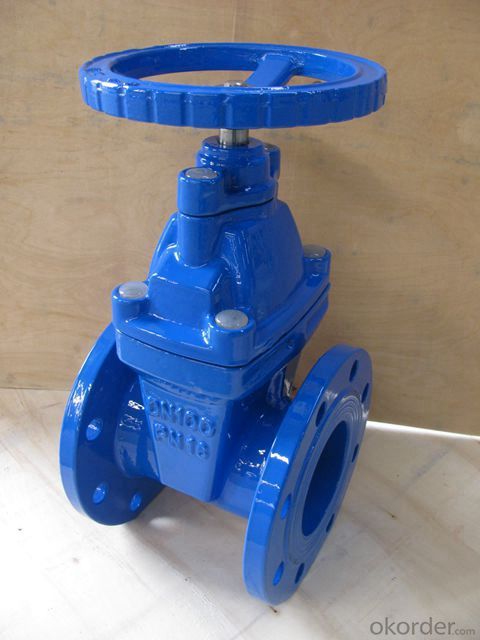
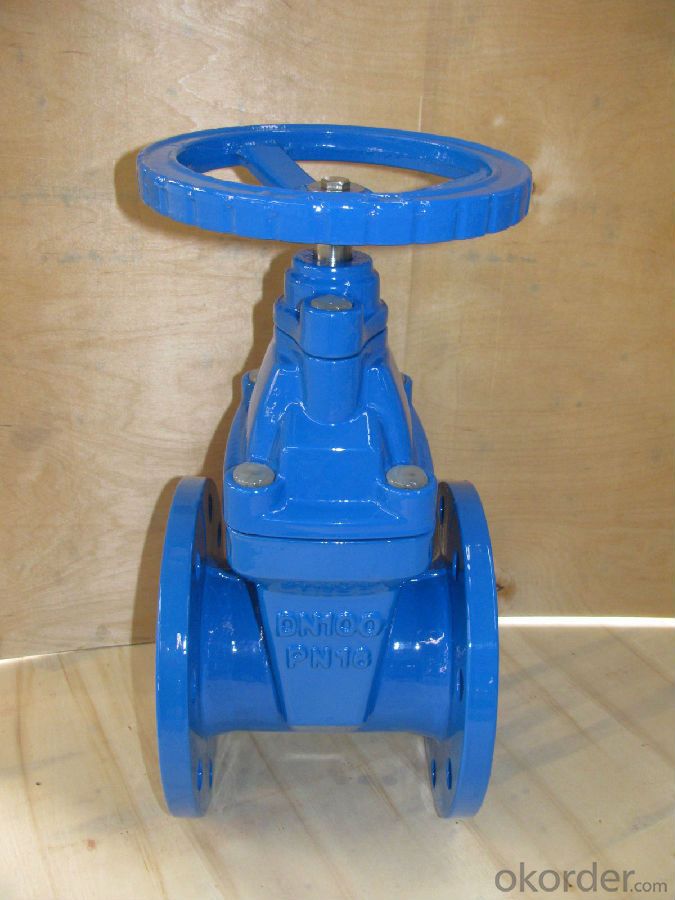
4. Gate valve Specification

5.FAQ
1. What's are the characteristics of gate valve?
The distinct feature of a gate valve is the sealing surfaces between the gate and seats are planar, so gate valves are often used when a straight-line flow of fluid and minimum restriction is desired. The gate faces can form a wedge shape or they can be parallel.
2. What is the work principle of gate valve ?
The gate faces can form a wedge shape or they can be parallel. Gate valves are primarily used to permit or prevent the flow of liquids, but typical gate valves shouldn't be used for regulating flow, unless they are specifically designed for that purpose. Because of their ability to cut through liquids, gate valves are often used in the petroleum industry.
3. What is the structure?
Bonnets provide leakproof closure for the valve body. Gate valves may have a screw-in, union, or bolted bonnet. Screw-in bonnet is the simplest, offering a durable, pressure-tight seal. Union bonnet is suitable for applications requiring frequent inspection and cleaning. It also gives the body added strength. Bolted bonnet is used for larger valves and higher pressure applications.
- Q: The difference between cut-off valve and gate valve
- The working principle is different. The stop valve is an upward stem type, and the handwheel rotates and rises with the stem. Valve is hand wheel rotation, stem upward movement. Flow is not the same, the gate valve requires full open, the cut-off valve is not the same. The gate valve has no inlet and outlet direction requirements, and the cut-off valve has the required inlet and outlet!Gate valve and stop valve are shut-off valve, is the most common two valves.From the exterior, the gate valve is shorter than the cut-off valve, especially the bar valve needs a higher height space. Valve sealing surface has a certain degree of self sealing capacity, its spool depends on the media pressure tight contact with the valve seat sealing surface, to achieve tight leakage. Wedge gate valve spool angle is generally 3~6 degrees, when forced to shut down excessive or temperature changes of the valve core is easy to die. Therefore, high temperature and high pressure wedge gate valve, in the structure have taken certain measures to prevent spool stuck. The valve in the opening and closing valve and valve seat sealing surface contact and mutual friction is always so easy to wear sealing surface, especially in close off the valve, the valve before and after the great pressure, sealing surface wear is more serious.
- Q: Why is gate valve or butterfly valve used for water pump?
- General pressure is small, use the butterfly valve, when the pressure is big, use the gate valve. The two main function of the valve is to adjust the flow and easy to overhaul.Zibo Boshan new Duke water supply equipment
- Q: Gate valve DN65 what does that mean?
- DN65 indicates that the valve bore is 65CM.The gate (gate valve) is a headstock ram, RAM direction of motion perpendicular to the direction of the fluid, valve can only be fully open and fully closed doors, discomfort pumpsparameters vary, usually 5 degrees is not high, medium temperature is 2 degrees 52'. To improve its manufacturability, make up for the deviation of the angle of the sealing surface during processing. This gate is called an elastic ram.
- Q: Does the relief valve have a gate valve?
- With the ball valve, needle valve, with the valve did not see, but there should be some.
- Q: Why does the fire hydrant box in the air defense area need to be added with gate valves?
- when the envelope from the introduction of civil air defense, air defense should be set in the side of retaining structure; through the protection unit between the closed wall, should be installed in the pipe walls on both sides of the door closed;2 protection valve nominal pressure shall not be less than 1.OMPa;
- Q: Why the valve can only be fully open and fully closed valve can adjust the flow?
- Valve, if adjusted, it is easy to wash the sealing surface, resulting in sealing surface damage.
- Q: What does the gate valve 150# mean? Is it stress PN? What's that, PN16 or?It's better to have some specific links, thanks!
- 150Lb (American Standard pressure value corresponding to the PN2.0)
- Q: What's the meaning of the gate valve model z41x 16Q?
- According to the provisions of the JB/T 308-2004 valve type programming method:Z = gate valve4 = flange connection1 = structural form: wedge type single gateX = sealing surface material: Rubber16== pressure rating: 1.6MPaQ== body material: ductile iron
- Q: Gate valve is gate valve, gate valve specifications, model code is generally what?
- Valve lock plate valve, gate valve and code.According to domestic valve model standards, the valve model is by the valve type, gate valve drive mode, gate valve connection, gate valve structure, sealing material, valve body material code to indicate.1, gate valve type code named Z;2, gate valve drive mode code by letters, common 2- electric hydraulic, 9- electric, 6- pneumatic, 5- bevel gear drive, 3- turbo worm; manual do not need to write out;3, gate valve connection form code with letters to indicate, 1- internal thread, 2- external thread, 4- flange type, 6- welding, 7- pairs clamp type, 9- clamp, 0- card sleeve;4, the valve structure of code, 0- flexible wedge, 1- rod single wedge gate valve, 2- rising stem wedge gate valve, 3- parallel single gate valve, 4- parallel double gate valve, 5- dark pole single wedge gate valve, 6- dark bar wedge gate valve 7-, dark bar parallel gate valve, parallel gate valve 9- dark bar;5, sealing materials or lining materials were used R- T- austenitic stainless steel, copper alloy, X- rubber, S- plastic, N- nylon, F- fluorine plastic, H-Cr series stainless steel, hard alloy Y-, J- rubber, M- Monel alloy, Tc- ceramics;6, the body material code Z- K- gray cast iron, malleable cast iron, Q- ductile iron, copper and T- alloy, C- steel, P- chromium nickel stainless steel, R- stainless steel chromium nickel molybdenum, chromium molybdenum vanadium steel V-.For example: electric, flanged, rod wedge gate valve, sealing surface material by direct processing, nominal pressure PN0.1MPa of the valve body is made of grey cast iron gate valve: Z942W-1 electric wedge gate valve.
- Q: What is wire feed gate valve? What do you say in French?
- Should refer to the threaded valve. Refers to the valve body with internal thread or external thread, and pipe thread connection. Also called thread valves, threaded valves, valves within the toothFlange gate valve is connected to the flange gate valve, this connection is the most common way.We also introduced a lot of threaded valve, can go to the front pages.The main difference is the threaded valve connectionI only know their English, I'm sorry I can't help youBox thread valveFlange valveThreaded valve, screw connected with the valve, should be said that the former is the most professional.
Send your message to us
ductile Iron Gate Valve standard cnbm supply ANSI standard
- Loading Port:
- China main port
- Payment Terms:
- TT OR LC
- Min Order Qty:
- 100 PCS
- Supply Capability:
- 1000 PCS/month
OKorder Service Pledge
OKorder Financial Service
Similar products
Hot products
Hot Searches
Related keywords
